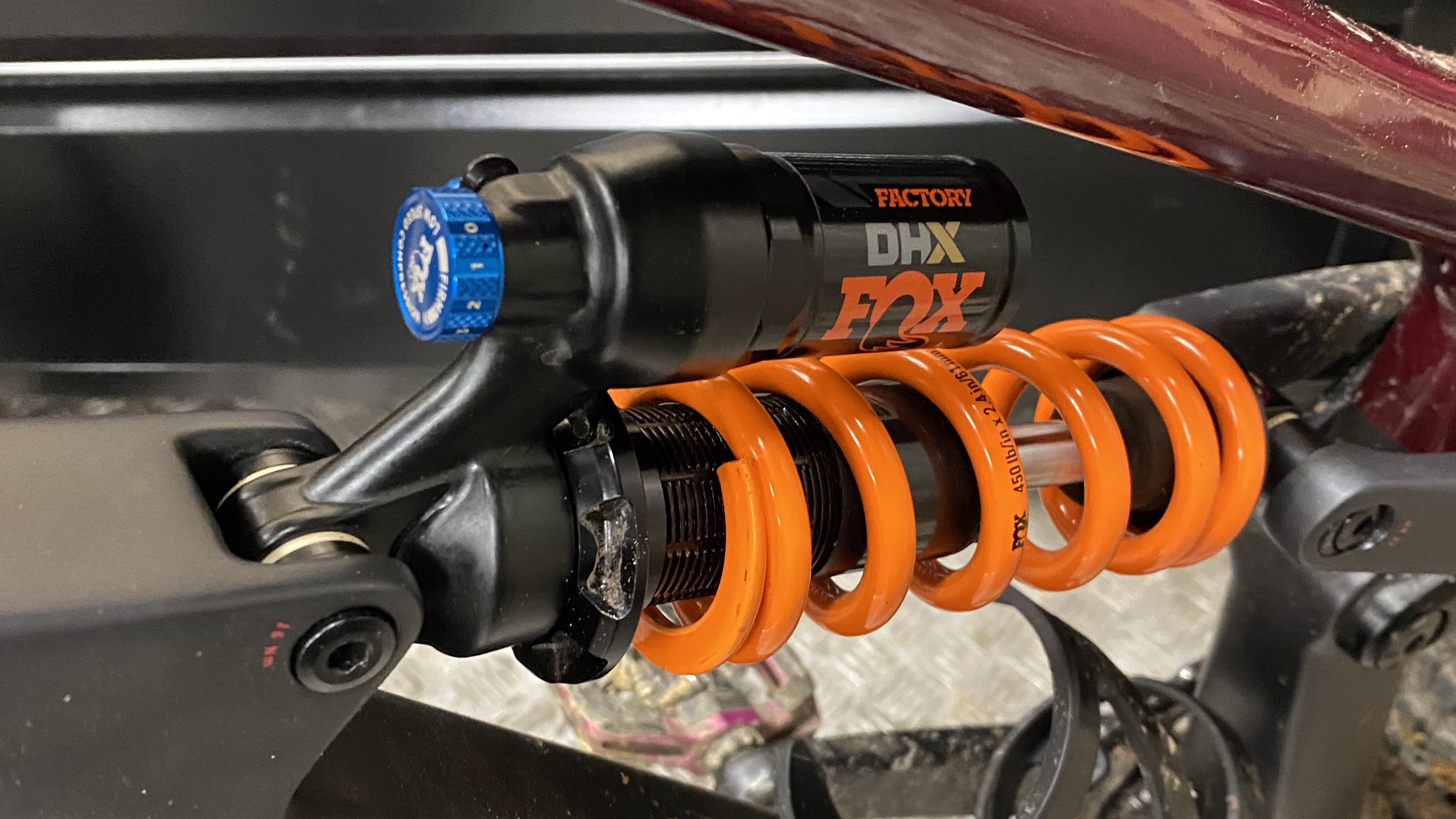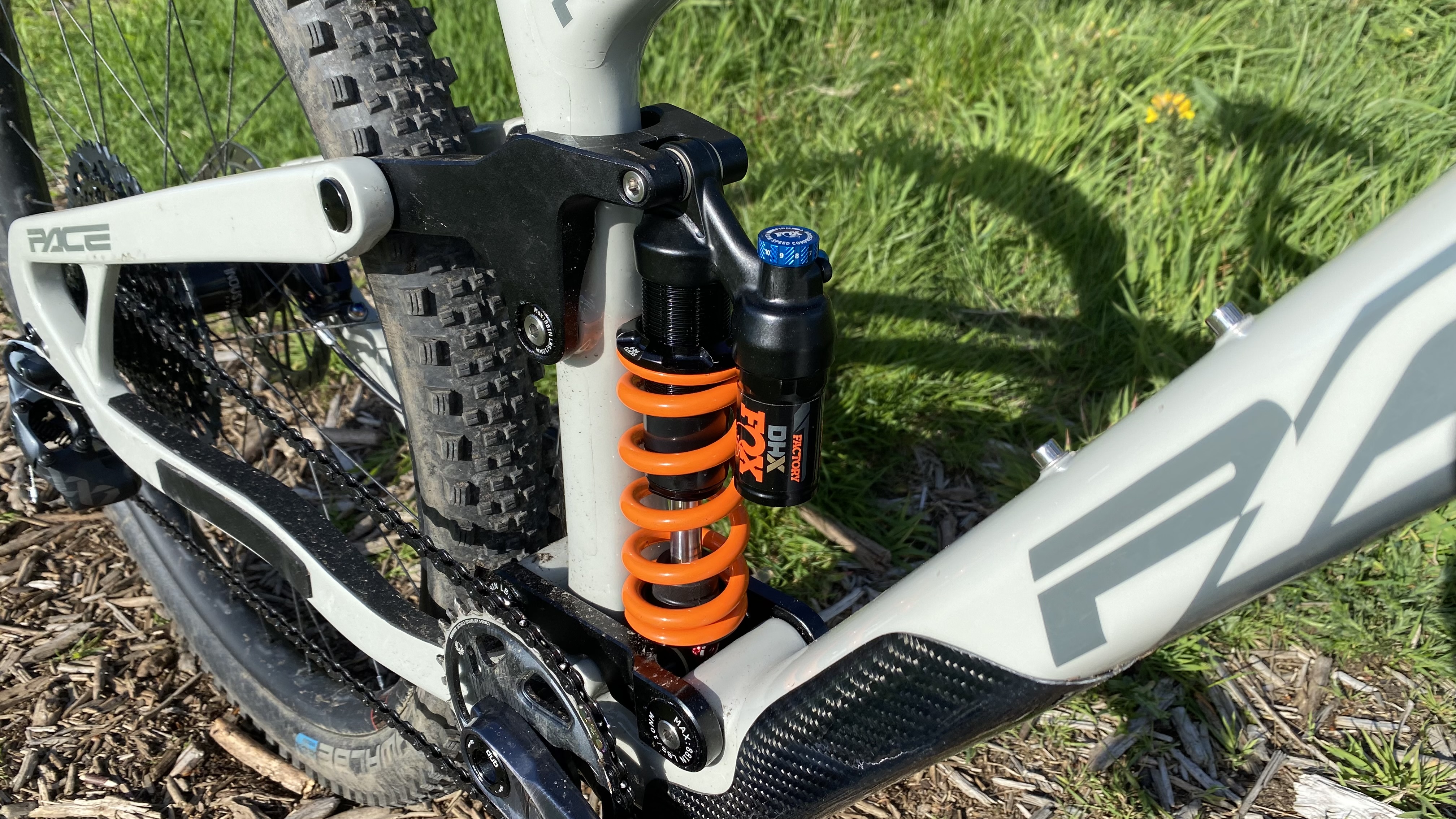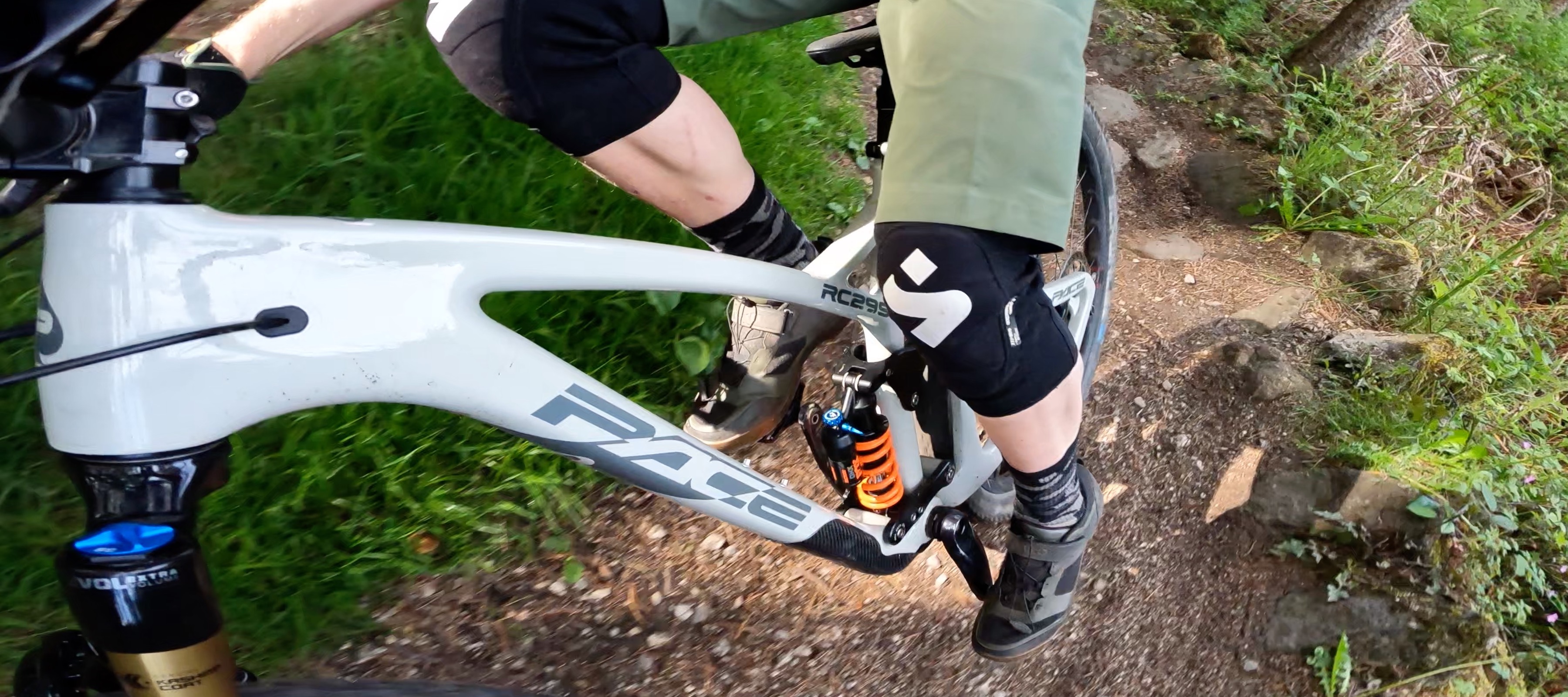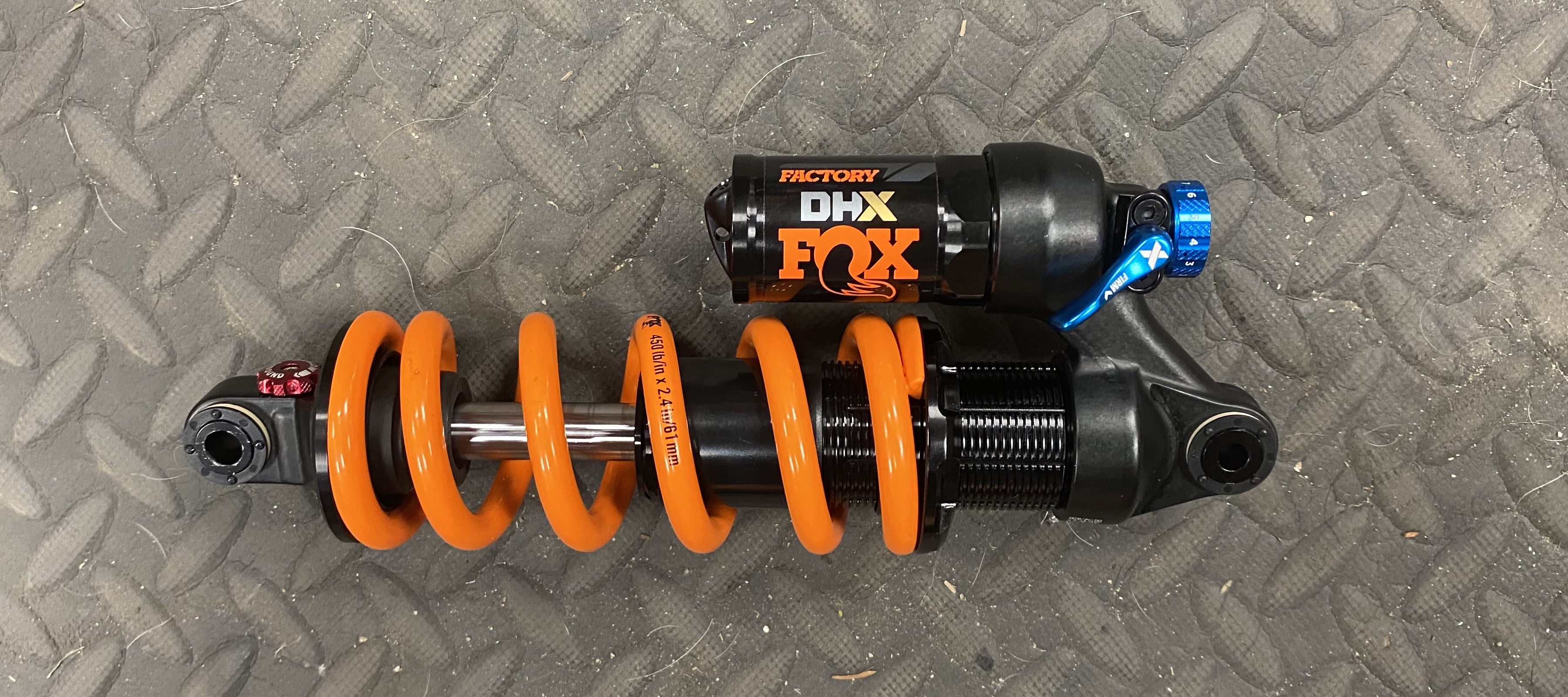Bike Perfect Verdict
Great if you’re after a super plush coil for ultimate traction, but lacks mid-stroke support and adjusters are counter intuitive
Pros
- +
Super plush coil action
- +
Awesome traction when dialed right
- +
Stealthily quiet
- +
Indexed and labeled preload collar
- +
Lightweight spring option
Cons
- -
Lacks mid-stroke support
- -
Potential spikes
- -
Counterintuitive compression numbering
- -
Expensive
- -
Fewer sizes than RockShox coils
Why trust BikePerfect
For information on Bike Perfect's testing procedures and how our scoring system works, see our how we test page.
Fox introduced its DHX2 as ‘the trail rider's coil shock’ with promises of super plush ground connection, high structural strength, and of course those steezy coil spring looks. However, the way it hoovers up small bumps and guarantees succulent, sucked-down grip is undermined by a lack of mid-stroke support. Trying to solve that can cause other issues and the compression adjuster labeling and rebound adjuster positioning isn't particularly helpful either. That leads to awkward comparisons to its simpler Marzocchi coil cousins.
Here's a breakdown of what we think of the Fox DHX2, and whether we think it deserves a spot in our list of the best rear shocks for mountain bikes.

Design and specifications
Fox introduced the DHX coil shock and Float X air shock together, and while the spring is obviously different, the two shocks share a lot of similarities. The damping is based around a single high flow shaft rather than the dual shaft, oil reciprocating design of the DHX2. That means a larger shaft that should theoretically create a stronger and stiffer shock that’ll last better in lighter trail bikes where dampers can potentially be exposed to damaging sideload.
The stroke can also be changed by up to 5mm by adding spacers inside the body, which is something you can do yourself if you’re careful. The piggyback chamber with ‘climb’ lever on the side and Low Speed Compression knob on the end is the same on both shocks too. Fox has also numbered the LSC knob so you can keep track of adjustment more easily, but there’s a potential issue with that. Fox always tracks clicks on its setup guides from fully closed, and the numbering reflects that. In other words from zero clicks is fully closed, while 10 actually means you’re running the least possible damping.
The shock body is obviously different because it’s a coil. Neat features include gaps in the thread for the preload collar as the more expensive DHX2 so that you get ‘clicks’ to track how many quarter turns you’re using. The collar is also laser etched with the max and min number of clicks and the tightening direction. The shock body also gets a scuff guard to reduce rub if the spring bends slightly as it compresses. 25lb coil weight increments make fine-tuning easier too and you can run it with a standard or lightweight (orange) SLS coil - both available separately.
The shock is available in most popular metric sizes in conventional and trunnion mount designs, but not as many sizes as the new RockShox Super Deluxe. The very small rebound adjuster at the base of the shock can be awkward to reach on some bikes too although you can also turn it with a 3mm hex key from a distance or a 2mm key or similar pick from the side.

Performance
Presuming you can get the right sizes and there are no clearance issues (our first host bike - a Pace RC295 - turned out to have a potential frame contact issue at full travel) the indexed coil preload helps simplify setup.
While fewer seals than an air shock always make coils very sensitive, the DHX is insanely plush straight from the box even by coil standards. That’s great for a sucked-down ride that completely erases smaller roots, rocks and ripples and keeps the tire in contact like you’re running half your normal tire pressure. The ‘Firm’ lever is easy to reach and adds substantial compression to stop the otherwise obvious pedal bob. It still blows though at a low enough level not to buck you over the bars if you forget to flick it back open before a descent.

After a few runs feeling euphoric about the outrageous smoothness of the shock and the quietness of the new damping design and hydraulic top out we started to have doubts about the levels of mid-stroke support. Pedaling felt very heavy without the ‘Firm’ level switched on and there wasn’t much to push against in turns or any load and launch situation. Videoing the shock and checking sag helped us double check that the spring weight was right but still we used too much travel too much of the time, and the bottom out bumper was getting a regular hammering. Finding a balance between enough LSC to lift and enliven the bike and starting to get a lot of slap and clatter over the roots and rocks it had previously been erasing proved to be really hard too. Not quite as hard as getting a balance between the rebound dial which always seemed to be on a knife edge between too sticky or too giddy. A situation that wasn’t helped by the fact the shock was buried deep in a lower linkage.
Having proved it didn’t work in a linear suspension landscape (which wasn’t a massive surprise) we shifted it across to a more progressive environment on a Canyon Spectral 125. It definitely improved things too, with the shock staying higher in its stroke more of the time. Trying to find the damping sweet spot between too soft and too spikey was still a real struggle though. We were still unable to separate whether it was an unintentional HSC effect from the LSC adjustments or whether the new High Flow piston isn’t quite enough high flow enough for really savage slaps. We’ll be carrying on testing, tuning and potentially taking the shock for a dyno session to try and work it out though and we’ll obviously update this review if we work out a solution or explanation.
Verdict
Fox has definitely succeeded in making an insanely succulent and smooth shock that creates an almost caricature coil smoothness. If you’ve got a bike with a naturally very progressive suspension set up then it should sync with it pretty well. Sizes are limited compared to RockShox though and even if the damping adjusters give you the right range they’re labeled or placed in a way that can make tuning awkward.
On the bikes we tried it in, what we gained in succulent grip we lost in pop, playfulness, and pedaling efficiency with more spiking and slapping than we expected too. Throughout testing we couldn’t stop thinking about the much cheaper Marzocchi Bomber CR2 coil shock which is based on the old Fox Vanilla coil and turns in a more balanced performance overall for just over half the price.
Tech Specs: Fox DHX coil shock
- Price: $569 / £629
- Sizes: Conventional: 210 x 50 / 210 x 52.5 / 210 x 55 / 230 x 57.5 / 230 x 60 / 230 x 65mm Trunnion: 185 x 52.5 / 185 x 55 / 205 x 60 / 205 x 62.5mm
- Weight: 771g (210 x 55mm with 450lb SLS spring)

Guy Kesteven has been working on Bike Perfect since its launch in 2019. He started writing and testing for bike mags in 1996. Since then he’s written several million words about several thousand test bikes and a ridiculous amount of riding gear. He’s also penned a handful of bike-related books and he reviews MTBs over on YouTube.
Current rides: Cervelo ZFS-5, Specialized Chisel, custom Nicolai enduro tandem, Landescape/Swallow custom gravel tandem
Height: 180cm
Weight: 69kg

